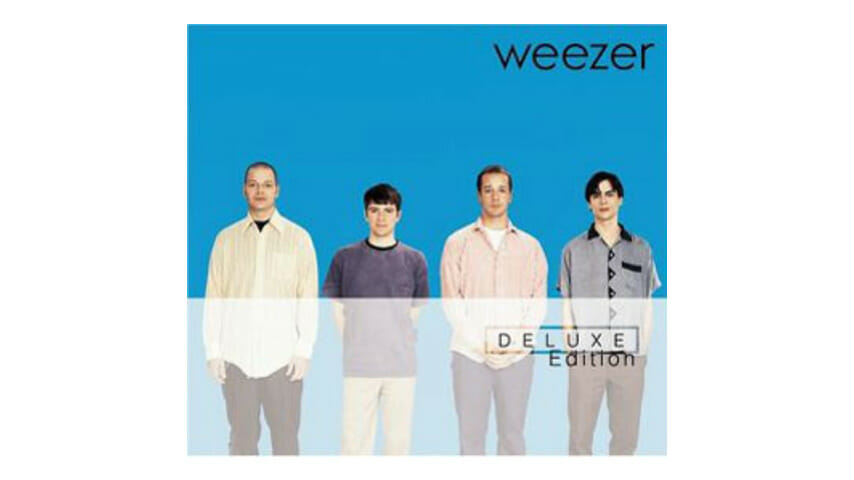
Looking back on the bands dominating radio station playlists in 1993, it’s not hard to understand why so many labels passed on Weezer before the four-piece eventually signed with Geffen. Electronic-based mainstays of the ’80s like Depeche Mode and New Order were enjoying considerable success with their latest releases. Pearl Jam and Stone Temple Pilots, churning out angst-laden arena rock, were busy riding the tidal wave of grunge’s surging popularity. And the Spin Doctors, well, nobody is quite sure exactly what they were doing. But while each of the aforementioned bands had its own comfortable niche—the alt-rock pioneers, the angry rebels, the funky party band with the heart of gold—Weezer stuck out like an oddly-spelled thumb. As Geffen A&R rep Todd Sullivan writes in the liner notes to the reissued Weezer, “they played sloppy, they looked like normal schleps, didn’t have that rock star presence, wore glasses.” But as Sullivan and millions of listeners found, Weezer’s songs caused the group to transcend any sort of predisposed notion of what a modern rock band should sound (or look) like.
Ten years after the Blue Album’s release, it’s clear Weezer has had a significant influence. (Check any fledgling alternative band’s “bass player wanted” flyer and either Weezer is listed, or they’re trying to play it off like they think the band is just OK while secretly burning incense at home in front of a giant “W”-shaped shrine.) While Nirvana reopened the doors to simple, unadorned, bare-bones rock, it did so with an overwhelming sense of torment and rebellion. The songs on Weezer are also unschooled, but they’re less anguished and more frustrated; less revolutionary, more… geeky. And that’s the charm of Weezer, isn’t it? All of a sudden, uncool is miraculously, inexplicably cool. Vocalist/guitarist Rivers Cuomo’s horn-rimmed glasses may have been considered dorky at the time, but some variation of them can now be found at mall LensCrafters locations the world over. His songs, dealing with loquacious girlfriends, suburban dislocation, unraveling sweaters (huh?) and more, may seem trivial compared to some other artists’ “big idea” songs, but they clearly resonate with like-minded geeks across the globe, those less concerned with foreign policy than the mad crush they have on their chemistry-lab partners.
So the reissued, augmented Blue Album is a welcome treat. Not so much because of the remastered tracks from the original album—it’s doubtful anyone other than audio engineers will notice a difference—but because of the added artwork and liner notes and the second disc full of b-sides, live tracks and previously unreleased recordings. And, of course, the feeling of buying a great album all over again.